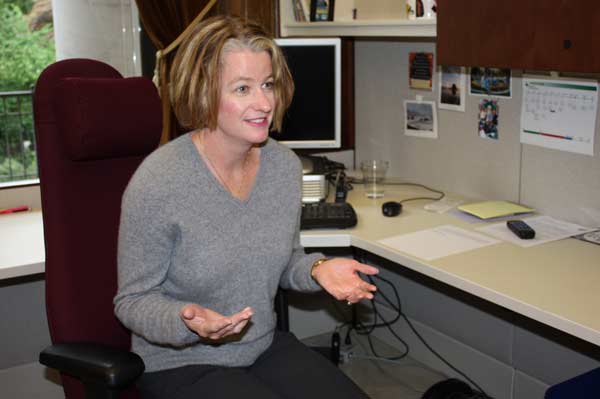Questions about initiatives with Co-Director of Elections
Katie Blinn, co-director of our office’s Elections Division, provides the lowdown on what’s happening with the three initiatives submitted recently.
Q) July 8 was the last day that signatures for initiatives could be brought to the Secretary of State’s Elections Division this year. How many initiatives were submitted and what do they cover?
Three were turned in. Initiative 1125 is Tim Eyman’s measure that affects transportation funding, including tolling on I-90 and Highway 520 bridges across Lake Washington. I-1163 is the SEIU-backed measure that deals with homecare workers. And I-1183 is the Costco-supported measure that privatizes liquor sales by allowing larger stores like Costco and Safeway to sell liquor while closing down state-run liquor stores.
Q) How many signatures are needed for an initiative to qualify for this November’s ballot?
At least 241,153 valid voter signatures are needed. We advised initiative sponsors to bring in at least 320,000 as a buffer in case there are any invalid or duplicate signatures. I-1125 had about 327,000, I-1663 brought in just over 340,000 and I-1183 turned in more than 354,000. So it’s likely that all three will make it on the ballot.
Q) What occurs once the petitions are submitted?
Once the petitions are filed in the Secretary of State’s Office, the sponsor is provided with a receipt of the number of petition pages submitted. That happened on July 8 for all three initiatives submitted. The petition pages are being imaged this week by the Archives Division of the Office of Secretary of State. Each initiative takes about three days to image the 17,000-20,000 pages holding over 300,000 signatures.
After the initiative signatures are returned from State Archives’ imaging staff, our Elections Division will start counting the number of signatures submitted. This step begins on July 18. The petition pages are bound into volumes of about 20 petitions per volume. At that point, the decision is made, based on the mathematical algorithm, whether the sponsor submitted sufficient signatures to proceed with a random sample check, or to proceed with a full check. The signature check process should be finished by the end of the first week of August.
Q) What’s the biggest challenge with the signature check process?
The biggest challenge is reading the handwriting to determine who signed the petition, and then searching the 3.5 million voter registration records to determine if the signer is registered to vote. If the person is registered to vote, the signature on the petition is compared to the signature in the voter registration record in order to validate the signature.
Many signatures will not be considered valid because the person is not registered to vote, the person signed the same initiative more than once, or the signature on the petition does not match the signature in the voter registration file.
Q) Is the Secretary of State authorized to perform random checks of signatures or must every signature be checked?
The Legislature has authorized the Secretary of State to establish, by rule, a 3 percent random sample method to perform signature checks of initiatives and referenda.
The Secretary has published rules establishing criteria for conducting a random sample signature check. The standards used by the Secretary are based upon a mathematical algorithm devised by a mathematics professor at the University of Washington.
Generally, the 3 percent random sample method can be used when a ballot measure sponsor submits a total number of signatures that far exceeds the required minimum.
Q) How long does a random or full check take?
Once the petition pages are ready for checking, a random sample check takes about four days. A full check takes six to eight weeks.
Q) Can an initiative or referendum petition be rejected on a random sample check?
No. An initiative or referendum petition may be approved on a random sample check, but may not be rejected on a random sample check. Thus, if a petition fails the random check, a 100 percent check must be conducted before the petition may be rejected. In 2006, Initiative 917 failed a sample check. The Elections Division conducted a full check before rejecting the initiative.
Q) How often is a 100 percent check conducted?
Since 1990, the Secretary of State has conducted 63 signature checks on initiative and referendum petitions. Only four of these, including Referendum 71 in 2009, have been 100 percent checks. The remaining 59 checks were completed using the random sample method.
Q) Can signatures be removed if requested?
The Secretary of State’s office does not remove signatures from petition sheets.
Go to http://www.sos.wa.gov/elections/Default.aspx to find out more about the state’s initiative process.
